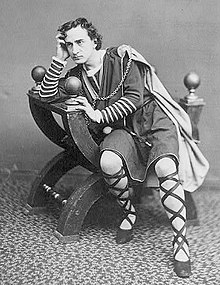HAMLET.
 Hamlet is Shakespeare's longest play and among the most
powerful and influential tragedies in all of English literature, with a
story capable of "seemingly endless retelling and adaptation by others."The play was one of Shakespeare's most popular works during his lifetimeand still ranks among his most-performed, topping the Royal Shakespeare Company's performance list since 1879.It has inspired writers from Goethe and Dickens to Joyce and Murdoch, and has been described as "the world's most filmed story after Cinderella".
Hamlet is Shakespeare's longest play and among the most
powerful and influential tragedies in all of English literature, with a
story capable of "seemingly endless retelling and adaptation by others."The play was one of Shakespeare's most popular works during his lifetimeand still ranks among his most-performed, topping the Royal Shakespeare Company's performance list since 1879.It has inspired writers from Goethe and Dickens to Joyce and Murdoch, and has been described as "the world's most filmed story after Cinderella".It has been theorized that Hamlet is based on the legend of Amleth, preserved by 13th-century chronicler Saxo Grammaticus in his Gesta Danorum as subsequently retold by 16th-century scholar François de Belleforest. Shakespeare may also have drawn on or perhaps written an earlier (hypothetical) Elizabethan play known today as the Ur-Hamlet. He almost certainly created the title role for Richard Burbage, the leading tragedian of Shakespeare's time.[5] In the 400 years since, the role has been performed by highly acclaimed actors and actresses from each successive age.
Three different early versions of the play are extant, the First Quarto (Q1, 1603), the Second Quarto (Q2, 1604), and the First Folio (F1, 1623). Each version includes lines, and even entire scenes, missing from the others. The structure and depth of characterisation have inspired much critical scrutiny. One such example is the centuries-old debate about Hamlet's hesitation to kill his uncle, which some see as a mere plot device to prolong the action, but which others argue is a dramatization of the complex philosophical and ethical issues that surround cold-blooded murder, calculated revenge, and thwarted desire. More recently, psychoanalytic critics have examined Hamlet's unconscious desires, and feminist critics have re-evaluated and rehabilitated the often maligned characters of Ophelia and Gertrude.



_-_The_Last_Supper_(1495-1498).jpg)





